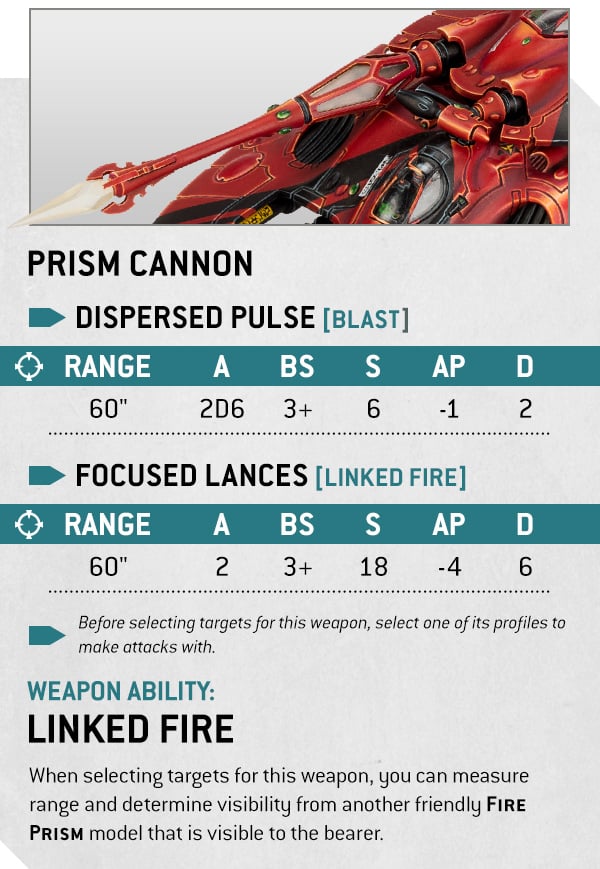New rules for Warhammer 40k 10th edition Eldar have been revealed on the Warhammer Community website. A Faction Focus article on Tuesday reveals the Strands of Fate army rule, which has some definite mechanical similarities with the Sisters of Battle’s Miracle Dice.
Eldar players in Warhammer 40k 10th edition will roll 12 Fate Dice at the start of the battle. The results of the dice are set aside – later in the battle, before you roll to hit, wound, damage, advance, charge, or for a battle-shock test, you can use a Fate Die. Rather than rolling one of the dice, you’ll use the stored result on that Fate Die. If you don’t like the result on your first 12 Fate Dice you can roll again, rolling one less die – a process you can repeat until you accept your fate.
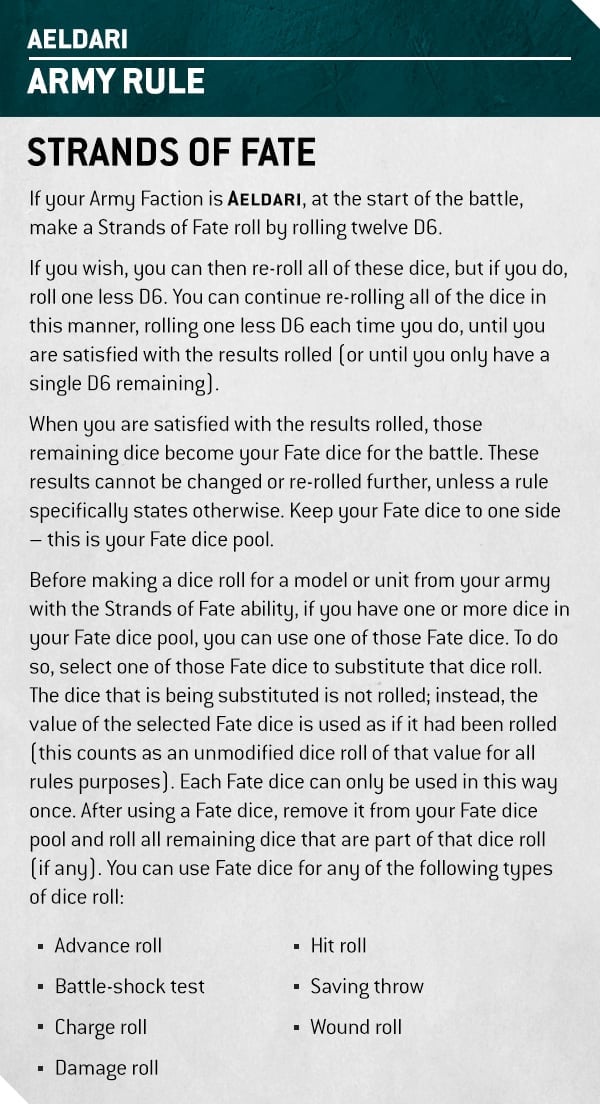
The Sisters of Battle’s Miracle Dice were previewed on May 10, and similarly allow you to substitute a stored die result for one you’re about to roll. The difference is that Eldar start the battle with lots of Fate Dice but struggle to get new ones, while Sisters pick up a Miracle Die every turn, every time they lose a unit, and through some unit abilities.
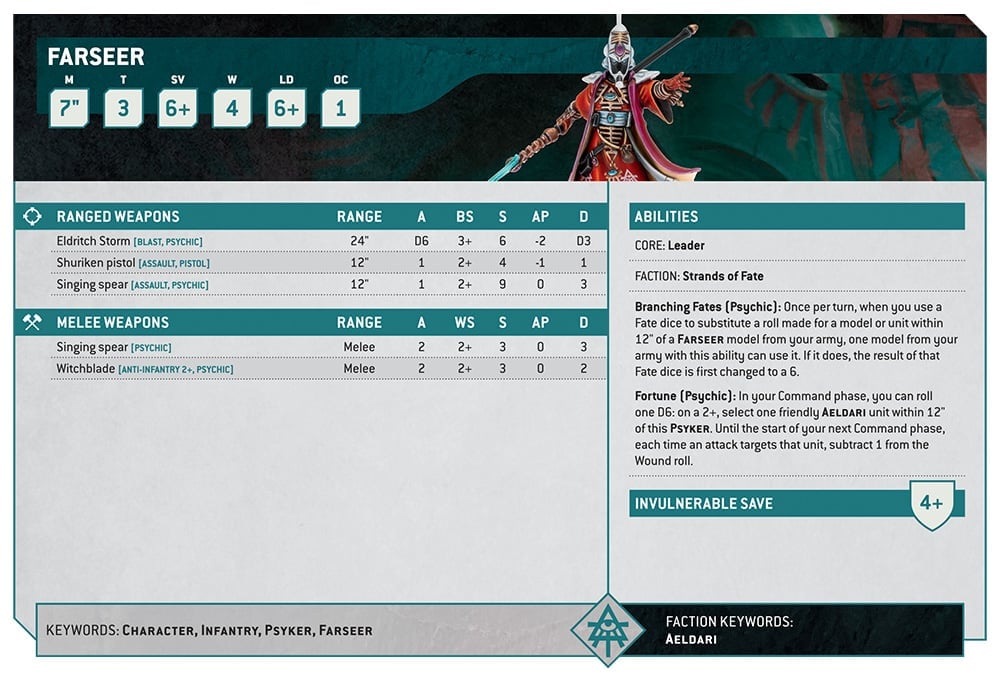
Updated 10th edition datasheets in the article show that some Eldar units have new rules that interact with the Strands of Fate and Fate Dice. The psychic Farseer can, once per turn, change the result on a Fate Dice being used by a unit within 12” into a six. Meanwhile the humble Eldar Guardians generate additional Fate Dice when they hold an objective at the end of your Command phase, giving you a trickle of new dice.
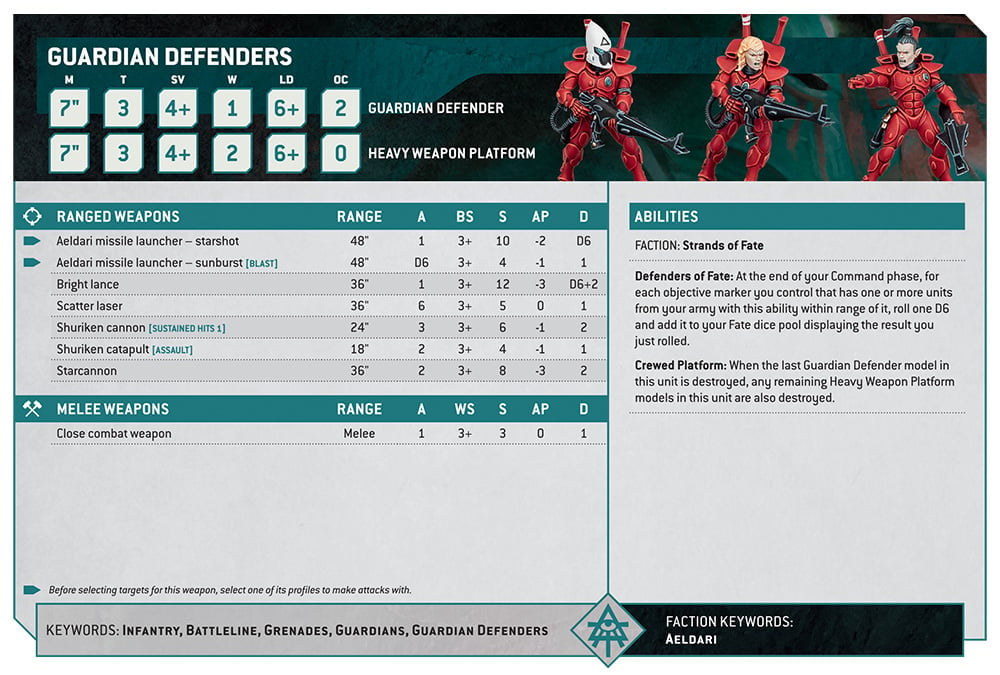
The article also shows the first Eldar Detachment for 10th edition, the Battle-Host. This has a very simple army rule, granting each unit in your force one re-roll to hit and one re-roll to wound every time it shoots or fights. We also get to see the Fire and Fade Stratagem, which for 2CP allows a non-aircraft unit that isn’t engaged to move after it shoots. It can’t charge later in the turn, but this could be a powerful tool to move a unit into cover, or forward onto an objective.
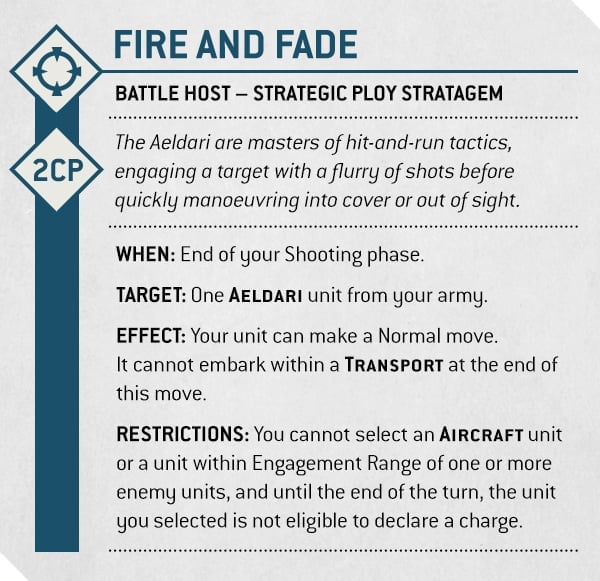
The article reveals the weapons profile for the Prism Cannon, the main ordnance of the Fire Prism gravtank. This massive laser’s Focused Fire mode has the unique Linked Fire Weapon Ability, which allows one Fire Prism to calculate its range and line of sight to a target from another Fire Prism that it can see – one Fire Prism channels its weapon into another Fire Prism’s gun. Popping a Fire Prism out of cover, using it to draw line of sight for another gravtank’s Focused Fire, then using Fire and Fade to retreat to safety seems like a classic Eldar move.
The way that Linked Fire is worded suggests it’s an Eldar-only Weapon Ability, rather than one that’s shared across several Warhammer 40k factions. We saw the Conversion Weapon Ability on the Leagues of Votann on May 11, but though they’re the only force making new Conversion beamers in the 41st Millennium, both the Imperium of Man and Adeptus Mechanicus have a few relics from the Horus Heresy hanging around.

